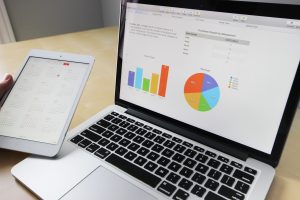The Complete Beginner’s Guide to Business Intelligence for Retail
 Business intelligence is moving into the hands of decision makers more quickly than ever before. Faster hardware, simpler tools, and easier-to-use techniques have enabled retailers to send highly accurate data to multiple applications within seconds. Despite the availability of these technological advancements, many retailers don’t have an enterprise-wide BI Strategy in place that takes advantage of these new benefits.
Business intelligence is moving into the hands of decision makers more quickly than ever before. Faster hardware, simpler tools, and easier-to-use techniques have enabled retailers to send highly accurate data to multiple applications within seconds. Despite the availability of these technological advancements, many retailers don’t have an enterprise-wide BI Strategy in place that takes advantage of these new benefits.
A 2011 benchmark report, “Intelligent Retailer’s World of Insight,” by Retail Systems Research (RSR), provided some recommendations for retailers looking to launch an enterprise-wide BI strategy. These recommendations were based on the behaviors of retailers that out-performed their competitors.
By taking the RSR model, called the “BOOT,” researchers analyzed year-over-year sales growth and distinguished retail over-performers (“Retail Winners”) from retail under-performers (“Laggards”). Researchers then issued a survey on business intelligence and compared the two groups’ responses on the topic. From this data, researchers were able to deduce how Winners and Laggards think, plan, and execute differently from one another.
In this article, we’ll discuss the findings of the Intelligent Retailer’s World of Insight report and considerations to make when launching a winning enterprise-wide BI strategy.
1. Infrastructure
It’s important to pick a robust, “big data” hardware that can support an enterprise-wide BI strategy. The hardware systems in place should set up with an open systems configuration that can interface with any brand. Information from these applications should be stored in a central database that then can be delivered quickly to multiple applications across many separate channels. Understanding the language of IT can be difficult when making these decisions, but by working with a trusted ERP solutions company any business should be able to select the right hardware for their business needs.
2. Executive Involvement
Authors of this survey believe that line-of-business executives are ready to learn the language of IT, but that organizational challenges prevent progress in Laggard organizations. Survey responses indicated that Winner companies had already overcome some of the challenges that prevented Laggard companies’ executives from working well together. Building on that conclusion, we speculate that involving company executives in any IT discussion is important to a successful launch of a winning enterprise-wide BI strategy.
3. Roadmap
Every enterprise-wide strategy should be broken up into incremental, value-focused steps. Retailers should first determine the kind of output they want from the advanced analytics collected, rather than focusing on the steps first. To accomplish this, many retailers work with an integration partner certified in a total retail solution to build a roadmap for their enterprise-wide BI strategy. While the retailer might be responsible for interviewing the field and determining what their needs are, a partner who has worked with multiple businesses can help the retailer select hardware, identify tools, and determine appropriate applications and delivery methods based on the desired output.
4. Wireless Plan for Stores
As consumers grow increasingly more mobile thanks to their smart phones, so does the demand for flexible mobile solutions within a retail environment. This study recommends retailers immediately start planning their wireless infrastructure in order to deliver real-time data to store managers and employees in the field.
5. Modern Delivery Vehicles
Siloed information channels present a challenge for Winner retailers and Laggard retailers alike. Seventy-five percent of survey respondents identified siloed operations as the biggest inhibitor to launching an enterprise-wise BI strategy. Fortunately, departments currently locked into information silos now have the ability to break free and receive a 360 degree view of the supply chain right up to point-of-sale. However, it’s important that companies develop modern and personalized delivery methods for this information.
While dashboards appear to be the preferred delivery method of C-level and Line of Business executives who spend a lot of time at their desks, store managers and employees need instantaneous data beyond the office. Unfortunately, the delivery methods identified here require the recipient to perform analytical analyses to achieve a course of action. While an executive might have time to ponder information in a dashboard, store employees can’t be expected to devote their attention to an in-depth analysis of a customer’s purchase information when the customer is standing right in front of them.
However, when BI analytics is coupled with a modern delivery system, store clerks can receive an output of the analytical data that is far more useful on a clerk-to-customer level. For example, receiving a prompt at customer point-of-sale that identified an up-selling or cross-selling opportunity based on their current and past purchase history would be very helpful indeed.
Metrics that Relate to your Strategy
 Whatever you’re tracking should specifically tie in to your organization’s strategy and your long term and short term business goals. Collecting data for data’s sake isn’t a valuable use of resources; whatever you’re looking at (especially dashboards) should be purpose built, giving you useful information about how you’re progressing towards your goals, what things you may need to change about your strategy to accomplish those goals, and what opportunities exist to accomplish them even more effectively.
Whatever you’re tracking should specifically tie in to your organization’s strategy and your long term and short term business goals. Collecting data for data’s sake isn’t a valuable use of resources; whatever you’re looking at (especially dashboards) should be purpose built, giving you useful information about how you’re progressing towards your goals, what things you may need to change about your strategy to accomplish those goals, and what opportunities exist to accomplish them even more effectively.
Keep in mind, this will look like very different sets of reports for different users. Your marketing team may want to see data on how promotional campaigns impact the sales of the products being promoted, and what kinds of patterns in purchase history they can find for those of your customers who spend the most with you. That data won’t be as relevant to the manager of your warehouse operations, who wants to know where they can identify inefficiencies or bottlenecks by looking at the information you generate about the movement of a product from ordering to arrival at a store location. A regional manager will be more interested in what the sales numbers are for each store location and how its performance compares to that same period last year and the year before.
Before you start considering business intelligence for your business, determine high priority goals for each part of your organization and then from there determine what metrics you need to support those goals and create more transparency around decisions of the most strategic importance.
Data You Actually Trust
It’s unfortunately quite common that business owners are reluctant to make big decisions based on nothing more than numbers produced in their system. It may be that they don’t trust their data because it’s been wrong in the past, because one or two of their sources are old or of uncertain quality, or because the different pieces of software in their system provide different numbers and it’s impossible to know which one is correct.
No matter how relevant and meaningful your data is, if you don’t trust it, you can’t act on it. This isn’t any different from a person showing up in your office and saying they have a great plan to boost your sales, if you just adjust what you’re doing according to their outline – you’ll said to them, that sounds like a great end result, but where are you getting that information from and how do I know it’s true? Your data is much the same – you need to be able to see where it all comes from, be confident that your system is secured with the appropriate permissions settings for inputting and changing data, and feel comfortable that what your BI solution or reporting tool tells you is the absolute truth.
For Insights to be ‘Actionable’, they must be Meaningful and Accurate
It’s the combination of those two things that makes a piece of information genuinely useful to a decision-maker. First ask, is it relevant? Secondly ask, is it trustworthy? When you feel like you can say yes to both things, you’ve got a solid BI / reporting solution, and you can call those ‘actionable insights’.
In practice, this means things like a liquor store chain realizing that the core client base of one store prefers overall sweeter flavors than their other locations, or a pet store chain being able to identify that they should start ordering cat and dog costumes earlier in the year to avoid running out of stock several days before Halloween. Those are actionable insights – and once you’ve got a BI setup that gives you data that is both meaningful and accurate, your business will benefit greatly from making more informed decisions to help refine strategy and accomplish business goals.
RECENT POSTS
 Evaluating Retail Solutions: 3 Warning Signs It's Not a Good FitThis article looks at three warning signs that your [...]
Evaluating Retail Solutions: 3 Warning Signs It's Not a Good FitThis article looks at three warning signs that your [...] 4 Tips to Help Mid-Sized Retailers Better Manage their Supply ChainLearn how to plan and launch a BI strategy [...]
4 Tips to Help Mid-Sized Retailers Better Manage their Supply ChainLearn how to plan and launch a BI strategy [...] 3 Biggest Mistakes Retailers Make with Mobile ERP SecurityCommon mistakes retailers make when it comes to mobile [...]
3 Biggest Mistakes Retailers Make with Mobile ERP SecurityCommon mistakes retailers make when it comes to mobile [...]
